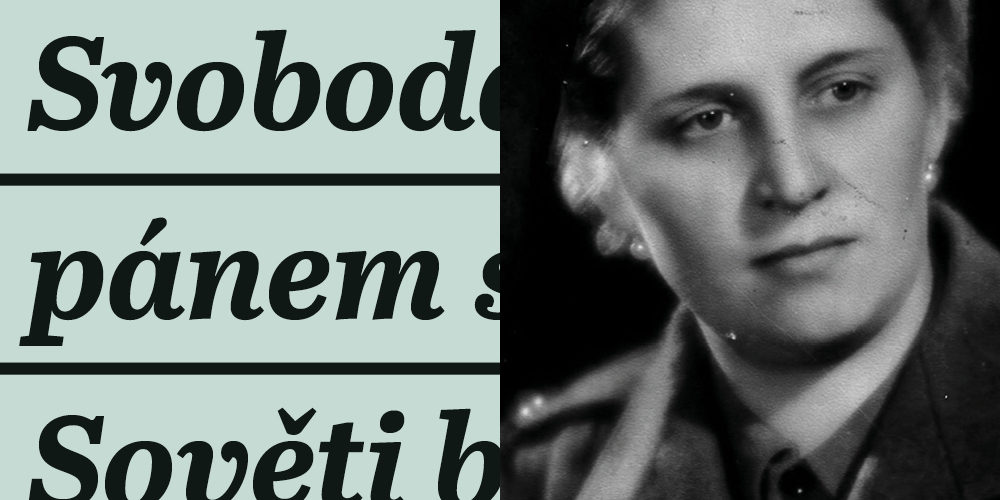
After the Hungarians took control of Subcarpathian Rus in 1939, Jiřina (then Severová) had to leave high school and do forced labor. She decided to flee to the Soviet Union with several of her classmates in the hopes that they would let her finish her studies there. Disillusionment came shortly after crossing the border.
“You are Czech spies!” a Soviet border guard accused them.
They ended up in prison and later in the gulag at Ukhta. The prisoners had to pull floating wood from the half-frozen river in minus sixty-degree frost. “I lay down on the snow and wanted to die. I remembering hearing that freezing was a good and easy death,” Jiřina recalls the moment when she lost the will to live. At that time, she was allegedly rescued by one of her cell mates – a Russian prostitute. Later, Jiřina was sent to work on a Kazakh collective farm, where, this time in unbearable heat, they dug irrigation canals.
Meanwhile, Nazi Germany invaded the Soviet Union and prisoners from Czechoslovakia were allowed to join the forming military unit. “Svoboda was not the master of his army. The Soviets were” recalls Jiřina Tvrdíková. For example, the Soviet politruks changed the Czechoslovak Army Corps’ plan for the advance by decree during the Battle of the Dukla Pass. She herself almost died during the fighting at Liptovský Mikuláš when she was shot in the spine and ended up covered in dirt. For many years after the war she suffered from trauma and hallucinations of the horrors she had endured.
Liberation
Nazi Germany was defeated in the Second World War by the determination, bravery, and combat deployment of soldiers from the United States, Great Britain, Poland, France, the Soviet Union, and other countries and nations. But the Soviet Union, led by the dictator Stalin, did not join the Allies until it itself was attacked by the Nazis in June 1941. Until then, the USSR had acted as a partner of Nazi Germany in the spirit of the Molotov-Ribbentrop Pact concluded shortly before the outbreak of the war. At that time, when tens of thousands of Czechoslovaks fled from the Nazis to the USSR, they often ended up in gulag labor camps. The Red Army did not enter the war until the summer of 1941 after Nazi Germany had invaded.
The Soviet Union deployed over six million soldiers to the Eastern Front. We can speak of great heroism and huge losses. The Red Army, with great effort, defeated the better armed and trained German Wehrmacht, and with it the prestige of the “land of the Soviets” logically grew. However, when we talk about the liberation of Czechoslovakia, we must mention, besides the Soviet victims (up to 140,000 Red Army soldiers are said to have died), the tens of thousands of our soldiers fighting alongside the Allies on the Eastern and Western fronts, the brave Slovak insurgents, the paratroopers, partisans and thousands of their helpers, the insurgents from the barricades of Czech towns at the end of the war, and last but not least the soldiers of the American Army who liberated part of the Czechoslovak territory from the west, as well as the forgotten Romanian soldiers advancing with the Soviets from the east. On 8 May 1945, after six long years, peace reigned in Europe and Czechoslovakia became a liberated country. But not free.



